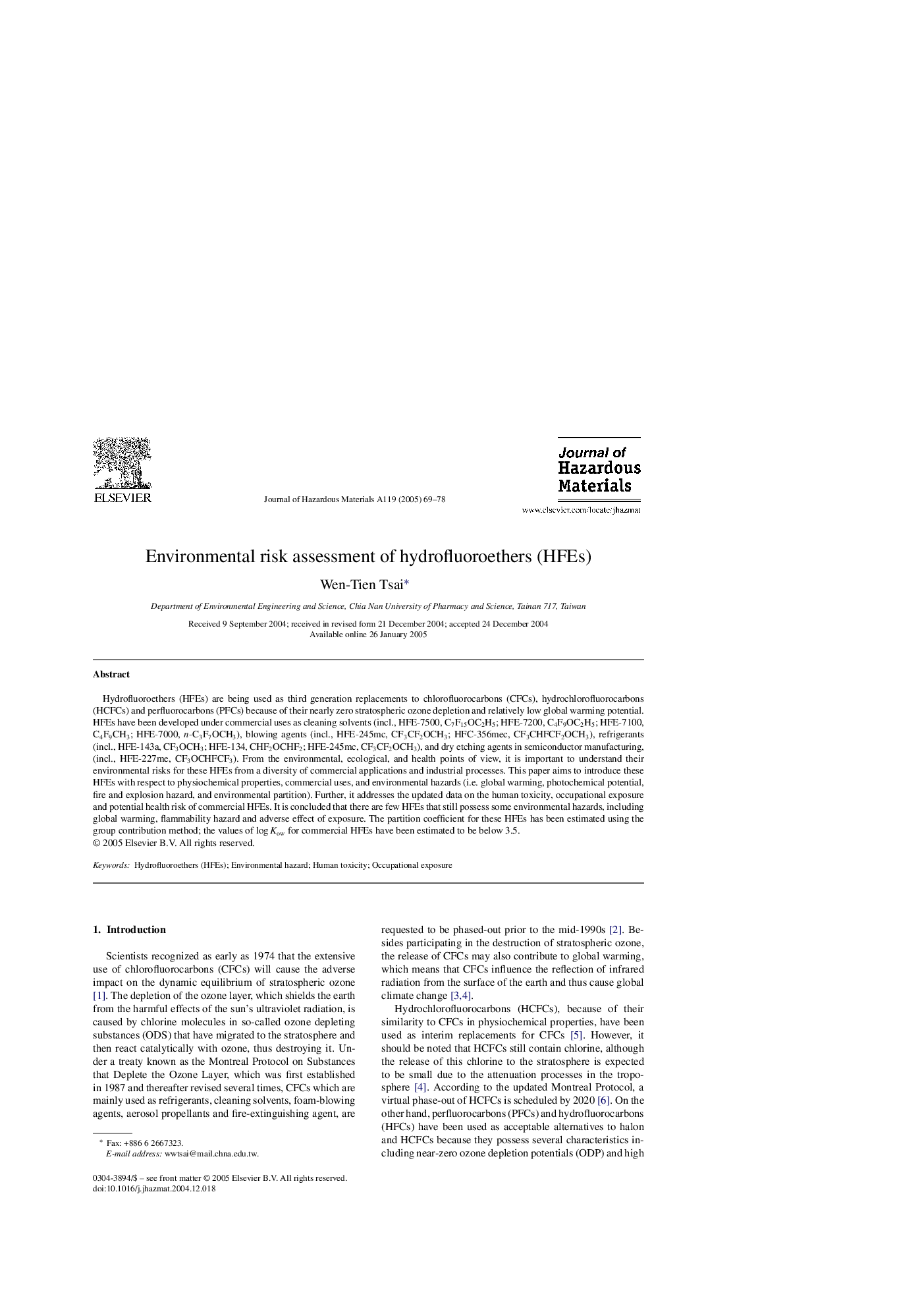| Article ID | Journal | Published Year | Pages | File Type |
|---|---|---|---|---|
| 9674342 | Journal of Hazardous Materials | 2005 | 10 Pages |
Abstract
Hydrofluoroethers (HFEs) are being used as third generation replacements to chlorofluorocarbons (CFCs), hydrochlorofluorocarbons (HCFCs) and perfluorocarbons (PFCs) because of their nearly zero stratospheric ozone depletion and relatively low global warming potential. HFEs have been developed under commercial uses as cleaning solvents (incl., HFE-7500, C7F15OC2H5; HFE-7200, C4F9OC2H5; HFE-7100, C4F9CH3; HFE-7000, n-C3F7OCH3), blowing agents (incl., HFE-245mc, CF3CF2OCH3; HFC-356mec, CF3CHFCF2OCH3), refrigerants (incl., HFE-143a, CF3OCH3; HFE-134, CHF2OCHF2; HFE-245mc, CF3CF2OCH3), and dry etching agents in semiconductor manufacturing, (incl., HFE-227me, CF3OCHFCF3). From the environmental, ecological, and health points of view, it is important to understand their environmental risks for these HFEs from a diversity of commercial applications and industrial processes. This paper aims to introduce these HFEs with respect to physiochemical properties, commercial uses, and environmental hazards (i.e. global warming, photochemical potential, fire and explosion hazard, and environmental partition). Further, it addresses the updated data on the human toxicity, occupational exposure and potential health risk of commercial HFEs. It is concluded that there are few HFEs that still possess some environmental hazards, including global warming, flammability hazard and adverse effect of exposure. The partition coefficient for these HFEs has been estimated using the group contribution method; the values of log Kow for commercial HFEs have been estimated to be below 3.5.
Related Topics
Physical Sciences and Engineering
Chemical Engineering
Chemical Health and Safety
Authors
Wen-Tien Tsai,
